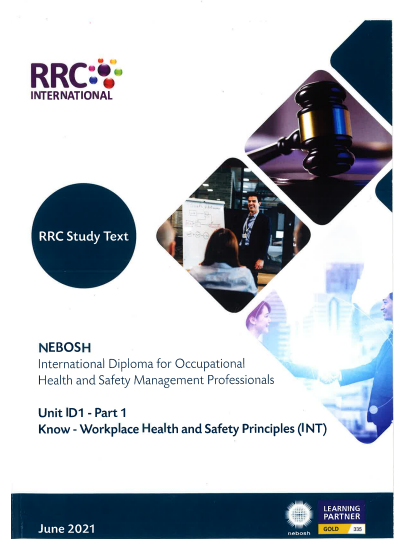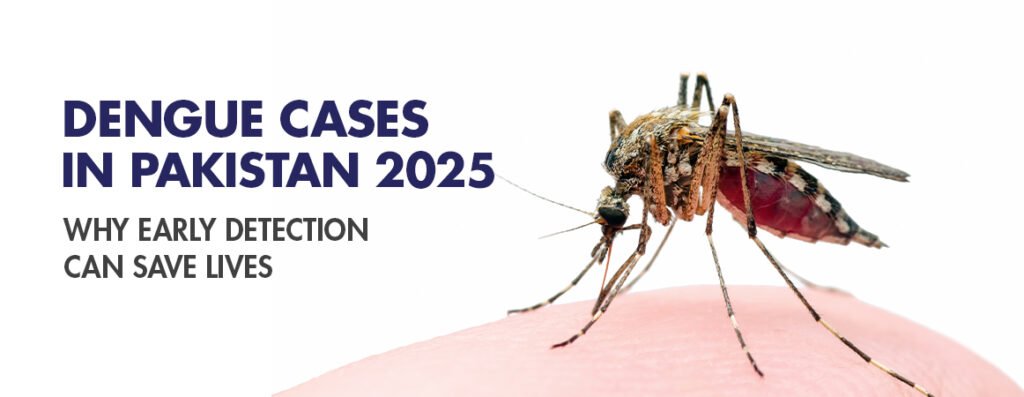
Dengue Fever in Pakistan 2024–2025: Facts & Prevention
Dengue Fever in Pakistan, a mosquito-borne viral infection, continues to pose a serious public health threat in Pakistan. Every monsoon season, thousands of people fall ill due to this preventable disease. While health authorities have made progress in awareness and control efforts, dengue outbreaks continue to resurface, particularly after floods or heavy rainfall. Dengue fever in Pakistan 2024–2025 has become one of the most serious public health concerns in recent years. With rising infection rates across Lahore, Karachi, and Islamabad, the country faces an ongoing struggle against the Aedes mosquito and the conditions that fuel its spread. This blog explores the latest dengue facts, figures, and projections for Pakistan, providing an in-depth look at the current situation and what lies ahead.
In 2024, Pakistan again witnessed a worrying increase in dengue cases particularly in Punjab, Sindh, and Khyber Pakhtunkhwa and early 2025 trends suggest that without urgent interventions, the outbreak could intensify.
This comprehensive blog explores the current situation, verified statistics, recent provincial outbreaks, and projections for 2025, based on official data from Pakistan’s National Institute of Health (NIH), WHO, and other credible sources.
What Is Dengue Fever and Why It’s Rising in Pakistan
Dengue is caused by the Dengue virus (DENV), transmitted through the bite of infected Aedes aegypti and Aedes albopictus mosquitoes. These mosquitoes thrive in warm, humid environments – the exact conditions that Pakistan experiences during and after its monsoon season.
Uncovered water containers, discarded tires, flower pots, and stagnant drains become ideal breeding grounds. Urban areas, where water storage and waste management are often poor, are the hardest hit.
Key reasons dengue spreads rapidly in Pakistan:
- Uncontrolled urbanization and population density
- Poor water management and sanitation
- Extended monsoon seasons and post-flood stagnation
- Inconsistent vector control and fumigation
- Low community awareness about preventive measures
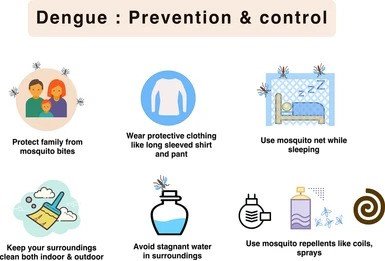
📊Dengue Fever Statistics in Pakistan 2024–2025 (Latest Data)
According to NIH weekly surveillance reports and provincial health department updates, Pakistan recorded approximately 16,000–21,000 confirmed dengue cases in 2024.
The actual number may be higher since many rural cases go unreported.
Provincial Breakdown (2024)
- Punjab: Thousands of confirmed cases, with Lahore being the most affected city.
- Sindh: Karachi continued to face consistent outbreaks throughout 2024.
- Khyber Pakhtunkhwa (KP): Saw moderate increases, especially after heavy rain in late 2024.
- Islamabad/Rawalpindi: Persistent clusters and multiple hospitalizations due to severe dengue.
According to WHO data, Pakistan remains among the top dengue-affected countries in South Asia, with recurring outbreaks since the massive 2011 Lahore epidemic.
The case fatality rate (CFR) has stayed below 0.5%, indicating improvements in clinical management, but hospitals continue to be overwhelmed during peak season.
In earlier long-term analyses, Pakistan’s average dengue CFR was estimated at 0.29% [NIH, WHO EMRO].
🏥Most Affected Cities and Provinces by Dengue Outbreak
Lahore, Punjab: The Epicenter of Dengue
Lahore, the capital of Punjab, continues to be Pakistan’s dengue hotspot.
The city has experienced recurring epidemics since 2011 when over 20,000 cases and 300 deaths were reported. In 2024, the Punjab Health Department confirmed thousands of infections during the monsoon, with several neighborhoods requiring emergency fumigation.
Efforts by the Dengue Expert Advisory Group (DEAG) and the Punjab Health Ministry included community inspections, larvicidal spraying, and awareness drives. Despite these, uncontrolled mosquito breeding and inadequate community participation remain challenges.
Karachi, Sindh: Urban Chaos Fuels Outbreaks
Karachi, Pakistan’s largest metropolis, consistently contributes the highest number of dengue cases in Sindh.
In 2024, health bulletins reported a significant spike, and early 2025 data confirmed the first dengue-related death in the province.
Flooded neighborhoods, open drains, and poor waste disposal created ideal mosquito breeding conditions. The Sindh Health Department initiated large-scale fumigation, but the recurrence of outbreaks shows the city’s fragile infrastructure and climate vulnerability.
Islamabad and Rawalpindi: Seasonal Surges Continue
The twin cities have seen steady dengue clusters every monsoon.
During the 2024 post-monsoon season, hospitals in Islamabad and Rawalpindi recorded hundreds of new cases per week, as per NIH reports.
Medical experts warned that citizens’ lack of awareness and improper waste disposal are the major contributing factors.
Early 2025 data suggests another rise in reported cases as heavy rain and mild winter temperatures favor mosquito survival.
🔬 Age, Severity, and Mortality Patterns
Studies from NIH and various hospitals across Pakistan indicate:
- Most patients fall between the ages of 15–45 years — working-age adults who are outdoors more frequently.
- Children and elderly patients experience higher risks of complications, including Dengue Hemorrhagic Fever (DHF) and Dengue Shock Syndrome (DSS).
- Delayed hospitalization and self-medication significantly increase fatality risks.
Severity Spectrum
- Mild dengue: High fever, joint pain, headache, rash.
- Severe dengue: Internal bleeding, plasma leakage, and organ failure — often requiring ICU care.
While the overall mortality remains under 0.5%, the burden on hospitals is substantial, with platelet shortages commonly reported during peak months.
Government and Health Department Response in 2024–2025
The 2025 monsoon and flood events have raised new concerns.
Heavy rainfall across Punjab, Sindh, and KP led to widespread flooding, creating stagnant water pools that serve as ideal mosquito breeding sites.
Relief camps and temporary shelters, often lacking proper sanitation and drainage, became high-risk environments for dengue transmission.
Health experts from the NIH and WHO warned that these floods could amplify dengue cases if vector control and sanitation are not prioritized.
📈 Projected Scenarios for 2025
Based on mid-2025 NIH surveillance data, WHO reports, and past dengue trends, two possible scenarios emerge:
Scenario 1: Controlled Season (15,000–30,000 Cases)
If vector control operations remain consistent, and the public cooperates in cleaning stagnant water, Pakistan may limit dengue cases to 15,000–30,000 during 2025.
This would reflect a moderate outbreak, similar to or slightly below 2024 levels.
Scenario 2: Severe Season (30,000–70,000+ Cases)
In the absence of proper vector control, particularly in flood-affected and urban slum areas, Pakistan could face over 70,000 infections nationwide in 2025.
This aligns with the high-outbreak years of 2017 and 2019, when poor drainage and heavy rains triggered record numbers of dengue cases.
These projections highlight the critical need for preventive actions during the post-monsoon period — from August to November — when the Aedes mosquito population peaks.
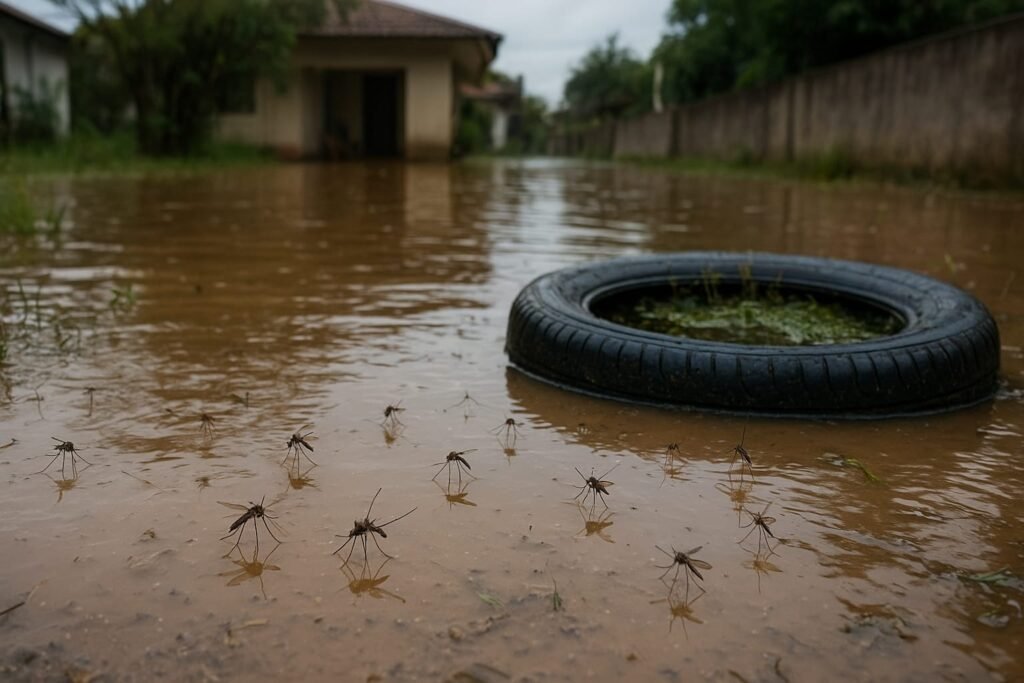
Causes and Transmission of Dengue Virus in Pakistan
Despite repeated awareness campaigns, several systemic and behavioral challenges hinder dengue control in Pakistan:
- Delayed Government Response: Fogging and cleaning often start only after cases surge.
- Public Negligence: Many households ignore stagnant water in pots, coolers, or rooftops.
- Climate Change: Longer monsoon seasons and warmer winters allow mosquitoes to survive year-round.
- Weak Waste Management: Open drains and uncollected garbage create permanent mosquito breeding zones.
- Limited Healthcare Resources: Hospitals face shortages of platelets, test kits, and staff during peak outbreaks.
🧠 Public Health Recommendations
For Citizens:
- Regularly clean and cover water containers.
- Remove standing water from flower pots, tires, and coolers.
- Use mosquito repellents and wear full-sleeved clothing.
- Seek medical attention immediately if fever persists beyond 2 days.
- Avoid self-medication with painkillers like Ibuprofen or Aspirin, which can worsen bleeding risks.
For Health Departments:
- Maintain real-time surveillance systems through NIH’s IDSR network.
- Conduct pre-monsoon fumigation instead of reactive spraying.
- Implement awareness drives in schools, mosques, and workplaces.
- Ensure adequate platelet supplies and hospital preparedness during peak season.
For Industries and Workplaces:
- Keep construction and manufacturing sites free of stagnant water.
- Conduct weekly inspections and maintain hygiene in rest areas.
- Educate employees on dengue prevention and early symptom recognition.
🌍 Learning from Global Success Stories
Countries like Singapore, Thailand, and Sri Lanka have achieved significant success in reducing dengue transmission through:
- Strict waste management systems
- Community-based mosquito breeding inspections
- Continuous public education campaigns
- Real-time data sharing between health departments
Pakistan can replicate these strategies by combining technology-driven surveillance with community mobilization.
Digital tools such as GIS mapping of dengue clusters and SMS alert systems (used in some Pakistani cities) can play a transformative role in early detection and control.
Future Outlook — Reducing Dengue Cases by 2025 and Beyond
Dengue fever is not an uncontrollable disease — it’s a preventable one.
While 2024 saw thousands of confirmed cases and 2025 carries the risk of another spike, proactive community engagement and consistent government action can change the outcome.
Pakistan must adopt a sustainable dengue management strategy that combines:
- Early surveillance and rapid response
- Vector control before monsoon
- Continuous public education
- Environmental sanitation improvements
If implemented effectively, Pakistan could significantly reduce its dengue burden within the next few years — saving lives, reducing healthcare costs, and building a healthier future.
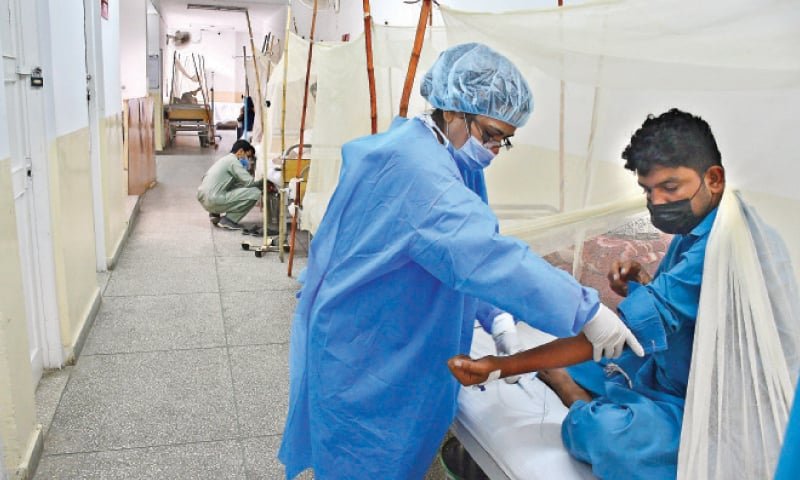
📚 Sources & References
- National Institute of Health (NIH) Pakistan – Weekly IDSR Reports & 2025 Dengue Advisory.
- World Health Organization (WHO EMRO) – Dengue Situation in Pakistan.
- Punjab Health Department & Dengue Expert Advisory Group (DEAG) Reports (2024–2025).
- Sindh Health Department & Karachi Press Releases (2024–2025).
- Dawn, Geo News, Arab News – Local Media Reports on Dengue Outbreaks.
- Peer-reviewed studies: “Epidemiology of Dengue in Pakistan 2011–2023” (PMC & NIH data analysis).
- The Guardian (2025) – “Pakistan Floods Raise Fear of Mosquito-Borne Diseases.”


